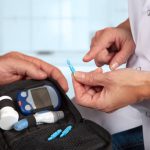Exposure to the sun leads to sun tan and sun burn and many other effects. Apart from tanning, the skin is exposed to harmful ultraviolet rays of the sun, which have several long-term effects, like early formation of lines and wrinkles on the skin.
Sun-exposure can also lead to dark spots or patches. Sun exposure can also cause loss of moisture from the skin.
So what is the solution?
At the moment, physical protection is the answer. This can be done by applying a broad-spectrum sunscreen. A sunscreen is a product which forms a protective cover between the skin and the sun’s rays, while a broad-spectrum sunscreen is one which provides protection from both UV-A and UV-B rays of the sun. Both UVA and UVB
radiation can cause skin damage, including premature ageing signs. Most sunscreens have built-in moisturizers. So, it is not necessary to apply both moisturizer and sunscreen, unless the skin is very dry.
What are UV rays?
The sun gives off ultraviolet rays. We divide them into categories based on the wavelength. There are UV-A, UV-B and UV-C rays. Of these, UV-C rays are almost completely absorbed by the ozone layer and do not affect the skin. UV-B affects the outer layer of skin and is mainly responsible for sunburns. It is the most intense between the hours of 10:00 am and 2:00 pm when the sunlight is brightest. UV-A rays were once thought to have a minor effect on skin damage, but now studies are showing that UV-A is a major contributor to skin damage.
What is SPF?
Skin type and sun sensitivity are important for selecting your sunscreen. The SPF should also be taken into account.
SPF is Sun Protection Factor. It is denoted by a number, which is mentioned on the label of the sunscreen. SPF is related to duration of sun-exposure and also to individual skin-sensitivity. A sunscreen with SPF 15 to 20 is adequate for most skins, but if the skin is more sensitive and tends to burn easily, one should use a sunscreen with a higher SPF of 30 or 40. Avoid rubbing the sunscreen into the skin. It is better to pat it on. For sensitive skins, which are prone to dark spots and patches, a sunscreen of SPF 40 may be used. Some skins develop a rash or redness on exposure to the sun. This is also due to sun-sensitivity. Such skins require higher SPF sunscreens.
Remember
It is essential to apply sunscreen, not only on the face, but also on all exposed areas. The back of the neck and arms are extremely vulnerable to sun damage too. Apply the sunscreen about 20 minutes before sun-exposure. If you happen to be in the sun for more than an hour, you should re-apply the sunscreen.
 n
n
-
Apply sunscreen while swimming, holidaying by the sea or in the hills. Reflective surfaces, like water and snow actually increase the effects of UV rays.
-
For oily skin, look for an “oil-free” product, or apply a sunscreen lotion, rather than a sunscreen cream. Add a drop of water to it, to provide a lighter coverage.
-
If the skin is very dry, apply a sunscreen cream. Or, you can apply a moisturising cream first. Wait for a few minutes and then apply the sunscreen.
Home-made sunscreen
Take 50 ml distilled or mineral water and add one teaspoon pure glycerine or aloe vera gel and a half-teaspoon sunflower oil. Mix well together to make a lotion and then add 3 to 4 teaspoons zinc oxide.
If the total quantity is 60 ml, 3 teaspoons zinc oxide will provide SPF 15. This will be a home-made sunscreen lotion. Adjust the water to get the right consistency. To this, you can also add 4 drops of vitamin E oil (for normal to dry skin). Aloe vera gel soothes the skin and also moisturizes.
Shahnaz Husain, globally acclaimed pioneer and leader in Ayurvedic beauty care. She is a world renowned beauty and wellness expert and the Founder and CMD of the Shahnaz Husain Group














